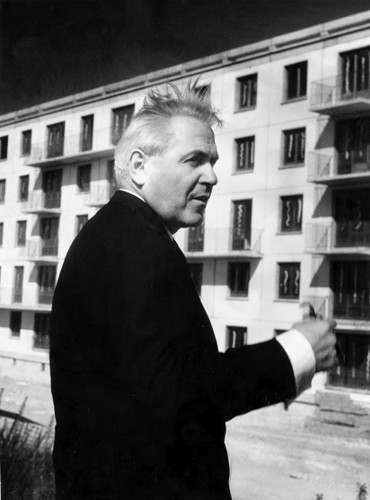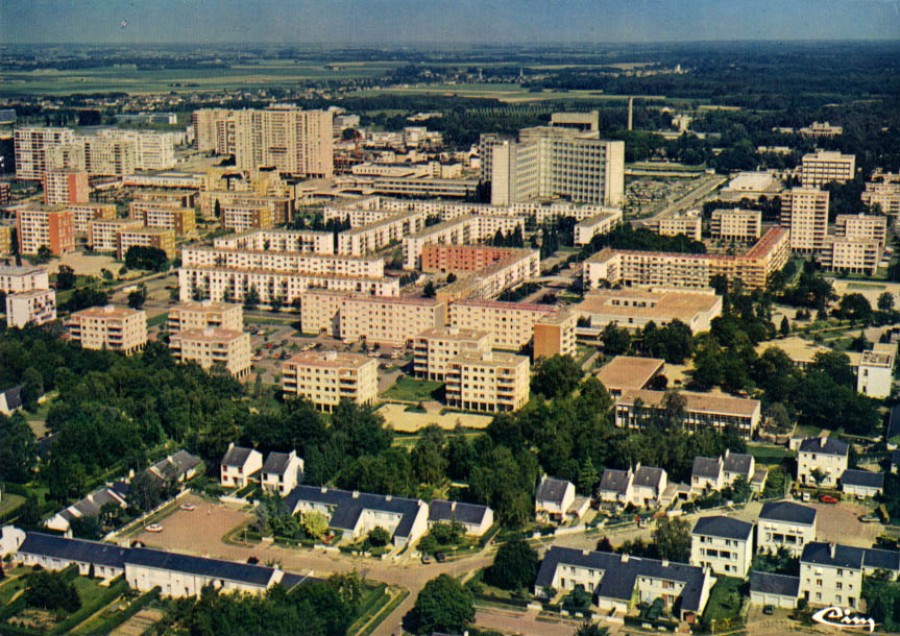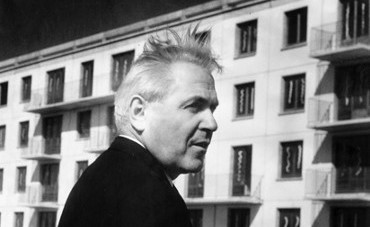Louis Arretche (1905-1991) is a French architect and town planner. After training at the Ecole des Beaux-Arts, he became chief architect of civil buildings and national palaces in 1955. From 1968 to 1977, he was a professor at the University of Paris 3 in Versailles. At the same time, he created with Roman Karasinki an architectural-urban planning agency with which he carried out numerous commissions, both private and public. As a post-war urban planner, Arretche ushered France into a new era : while he reconstructed from the original models while retaining the typical styles of cities, he nonetheless made a few changes by further ventilating urban spaces. This is what he did from 1944 to 1960 for the town of Saint Malo, nearly 80% destructed after World War II, then for the town of Coutance from 1946 to 19571.

In 1962, the Minister of Construction Pierre Sudreau entrusted Louis Arretche with the entire construction project for the new Orleans district : La Source. Apart from the Château de la Source, no building existed. Arretche then worked in close collaboration with the architect of the University, Olivier-Clément Cacoub, as well as with Roger Secrétain and Gérald Antoine. Faced with the housing problem in the city of Orleans in the 1960s, Arretche sees its project as a modern city that could accommodate a large number of inhabitants and in which pedestrians would be privileged. Large groups of concrete on slabs were built “on the framework of the paths of the Château de la Source and the existing landscape. “Despite the emergence of large concrete buildings to provide as much housing as possible, Arretche leaves room for nature, as Olivier-Clément Cacoub will do for the campus. This landscape dimension was new for the sixties, characterized mainly by the Brutalism wave. With the architect Jean Pouré, Louis Arretche built the various structures of the Parc Floral between 1964 and 1967. He built a water tower in 1971 intended to supply the new district with drinking water. Its shape evokes the gates of cities, so in a way Arretche gave La Source its emblem. He also created the postal check center, a large complex of 42,000 m2 spread over eight floors. While the La Source district was attractive in its early days, it quickly became a peripheral location, being located far from downtown Orleans, 10 km away.

At the same time, Louis Arretche was entrusted with the urbanization of the city of Rennes, from 1960 to 1991. He built Rennes 2 University and its Villejean district and, like for La Source, created the new district, Le Colombier, on slab. Subsequently, he was responsible, among other things, for the urbanization of the cities of Rouen in 1963 and Cachan in 1971, as well as the construction, in 1971, with his partner Karasinki, of the Charles de Gaulle Bridge in Paris. If posterity mainly retains the names of French architects such as Auguste Perret or Le Corbusier, Louis Arretche was much more prolific, and his creations are the most widespread on French territory.

1 Thomas Perrono, « Louis Arretche : reconstructeur du passé ou constructeur du futur ? », En Envor, http://enenvor.fr/eeo_actu/apresW/louis_arretche_reconstructeur_du_passe_ou_constructeur_du_futur.html#:~:text=Alors%20que%20la%20cit%C3%A9%20intra,%C2%AB%20%C3%A0%20l’identique%20%C2%BB.
2 France 3 Centre Val-de-Loire, « Orléans la Source, cité pilote du XXIe siècle ? », 10 Février 2015, https://france3-regions.francetvinfo.fr/centre-val-de-loire/2013/02/11/paysage-urbain-orleans-la-source-197973.html
3 Joël-Yves Gautier, « Louis Arretche, l’architecte qui a remodelé Rennes », Place Publique, n°6, Juillet-Août 2019, p. 79.

1 thought on “Louis Arretche”